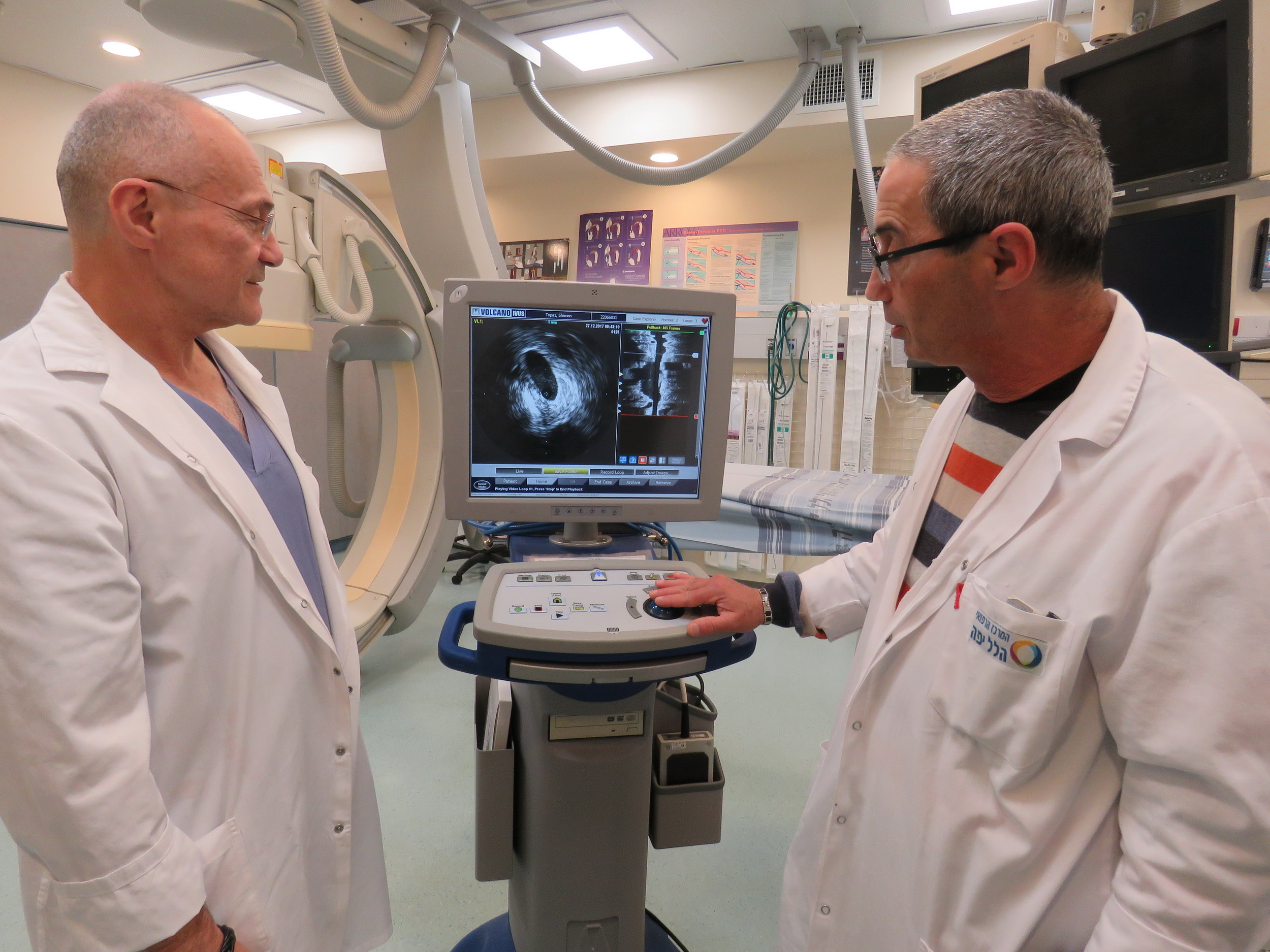Hillel Yaffe Medical Center is the first in Israel to perform catheterization for pelvic vein diseases using intervascular ultrasound (IVUS) technology. This method was adapted from cardiology, which incorporates IVUS technology in angiography procedures. The advantages are obvious – accurate diagnosis in real time and precision when implanting the stent in the pelvic veins, when necessary. This is a solution for a common disorder in the elderly population, which is generally underdiagnosed.
Pelvic vein catheterization has been used for the past several years to treat people with venous drainage disorders of the lower limbs caused by pelvic vein obstructions or by external pressure applied to the veins. The clinical implications of this common disorder among the elderly population include pain, recurring ulcers (sores) particularly on the shins, and edema in the legs. Most patients in this group are not diagnosed.
This phenomenon has begun to receive attention and designated treatment only recently, while common practice is to use catheterization and to inject contrast agents and implant stents as needed. This procedure is performed by a vascular surgeon and an angiography (invasive radiology) specialist.

Dr. Hebron and Dr. Kantarovsky next to an IVUS machine
“Until recently, the solution has been only partially effective, as the image received is static, frozen and ‘sliced,’ meaning that we don’t always observe the venous drainage disorder to a degree that enables optimal treatment,” said Dr. Dan Hebron, director of the Angiography Unit at Hillel Yaffe’s Imaging Center. “IVUS technology provides a comprehensive (360°) and dynamic image (that changes based on changes to the appearance of the veins in real time). When we see that the patient needs a stent, we are able to implant it very accurately.”
This explanation is supported by Dr. Alexander Kantarovsky, a leader in the field in Israel and a senior physician with Hillel Yaffe’s Vascular Surgery Unit, who has been using advanced technologies to treat pelvic and leg venous disorders for several years. “This technology was adapted from the world of cardiology, where it has been in use for over a decade. As my colleague noted, it provides us with excellent control when we implant stents, but the main advantage is the ability to provide a decisive diagnosis.”
As noted, Hillel Yaffe Medical Center is the first hospital in Israel to use IVUS technology for pelvic vein disorder, but apparently not for long, as Dr. Kantarovsky and Dr. Hebron both agree.
Catheterization is performed under local or general anesthesia, and the patient remains under observation after the procedure for no longer than one day in most cases. Symptoms such as venous congestion, leg ulcers, edema, and pain generally disappear within several days of the procedure and the patients’ quality of life improves accordingly.